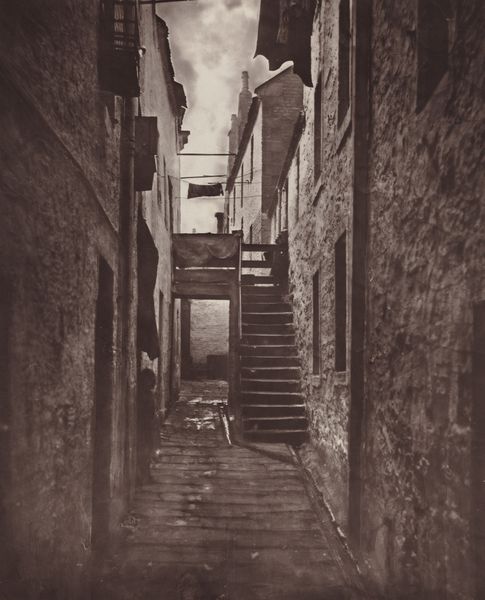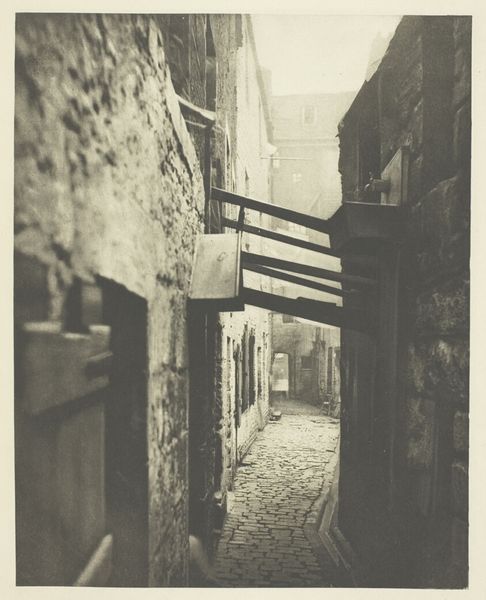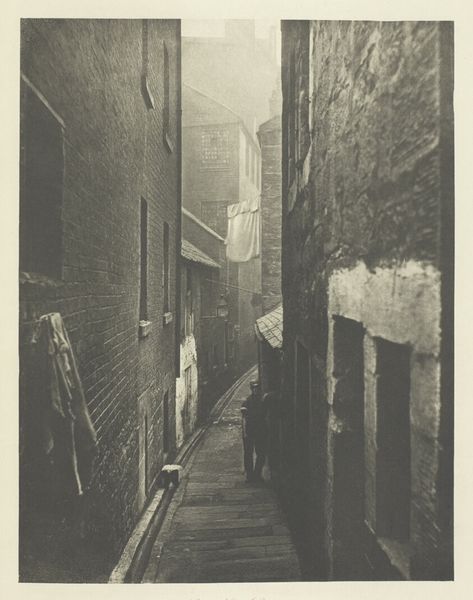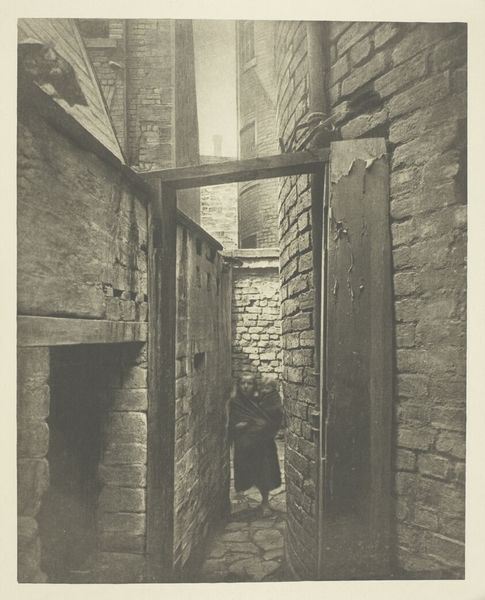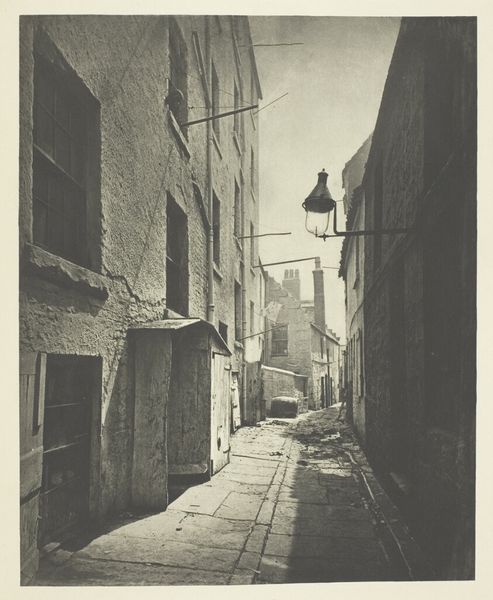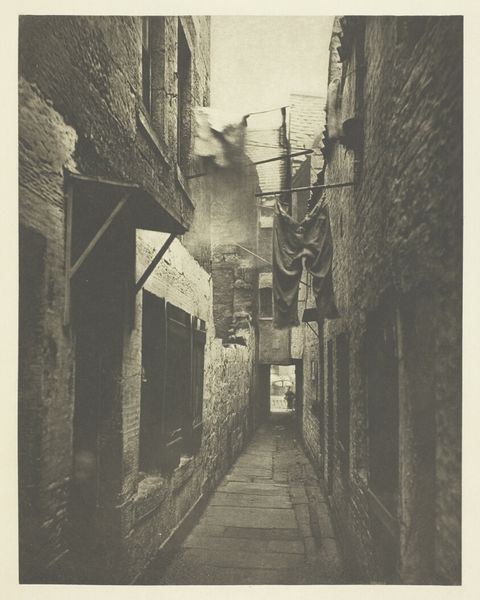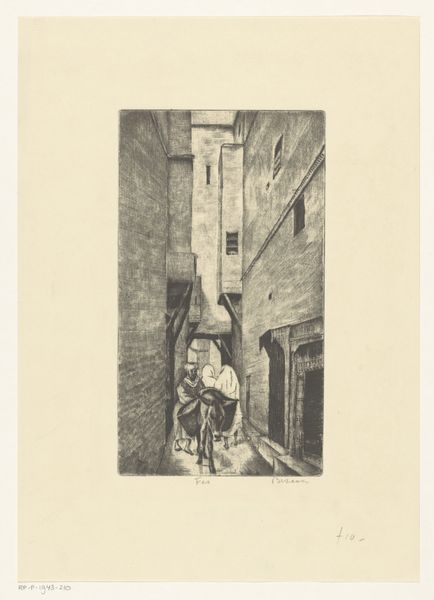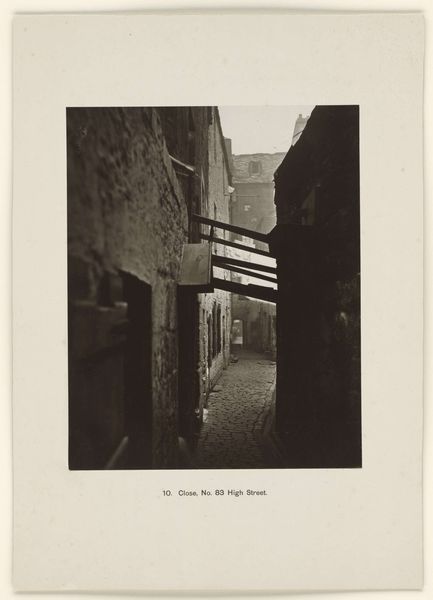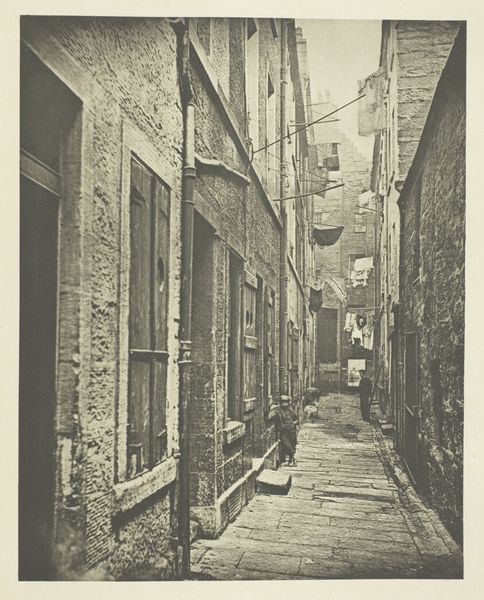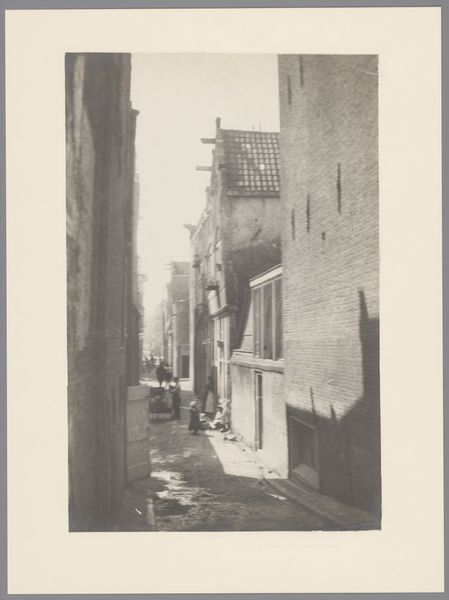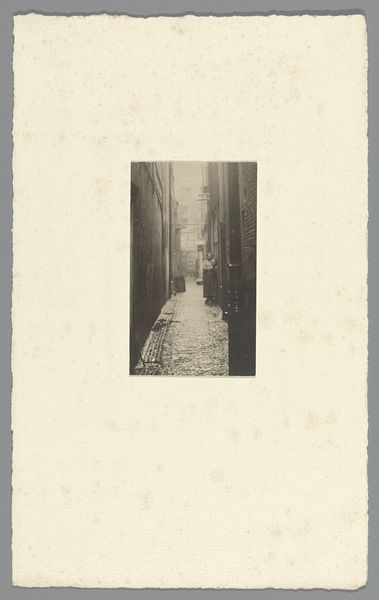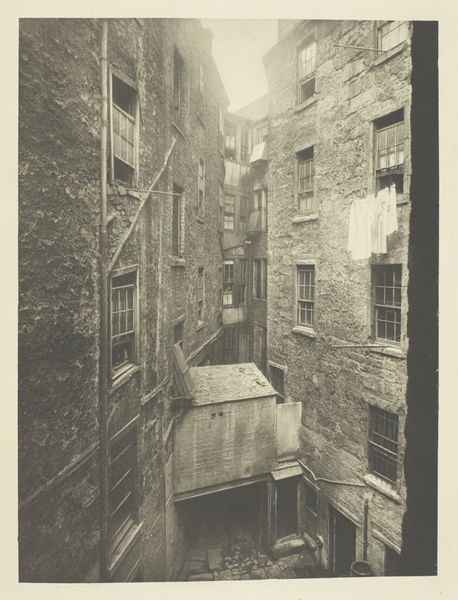
print, photography, gelatin-silver-print
#
print photography
#
pale palette
# print
#
landscape
#
archive photography
#
street-photography
#
photography
#
gelatin-silver-print
#
ashcan-school
#
cityscape
#
realism
Dimensions: 22.5 × 17.3 cm (image); 38 × 27.6 cm (paper)
Copyright: Public Domain
Curator: Thomas Annan’s “Close No. 128 Saltmarket,” created in 1868, gives us a glimpse into 19th-century Glasgow, presented here as a gelatin-silver print. What’s your initial read? Editor: Stark. The muted palette almost feels like a memory fading. I see the light at the end of the alley, but the oppressive architecture definitely makes me feel a sense of confinement, or maybe even dread. Curator: That “oppressive architecture” speaks volumes, doesn’t it? These "closes," or narrow alleyways, were infamous slums. Annan’s images were actually commissioned to document these areas before they were demolished. Think about that for a moment - photographs taken as evidence of urban blight. Editor: So, they're more than just simple depictions; they're visual documents meant to spur social change. Is the deliberate exclusion of vibrant life, reducing the scene to stark lines and tonal variations, a strategy? How did it influence public opinion about the living conditions? Curator: Absolutely. The starkness amplifies the sense of decay and neglect. Annan isn't just recording reality, he’s shaping the narrative. The compositions themselves become symbolic – the vanishing point drawing the viewer’s eye towards the unknown, the unseen consequences of industrialization and poverty. Editor: You are spot on. This narrow passage becomes a metaphor for societal constraints, and those distant figures lurking in the shadows transform from residents to tangible representatives of human struggle within those difficult times. The wash hanging overhead almost becomes like the chains that bind them, preventing light and fresh air from entering. Curator: A compelling metaphor indeed. The visual language employed connects with the overarching theme, enhancing the sense of oppression. Think of this work alongside others like Jacob Riis’s photography in New York – images acting as catalysts for social reform. Editor: The resonance between the places makes me curious if those parallels sparked similar reforms, a change to cityscapes everywhere through powerful documentation of places just like this one? The image clearly reminds me that progress isn't always equally distributed, a thought which, for me, has certainly created lasting impressions. Curator: And that's why revisiting these images remains so crucial. They aren't just historical documents; they’re persistent reminders of societal responsibilities.
Comments
No comments
Be the first to comment and join the conversation on the ultimate creative platform.
